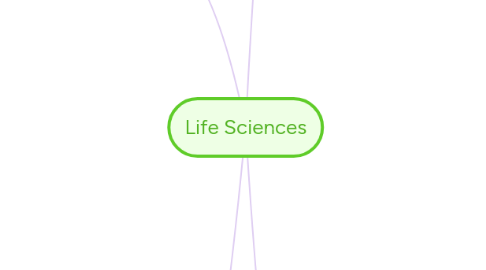
1. LS2: Ecosystems: Interactions, Energy, and Dynamics
1.1. LS2.A: Interdependent Relationships in Ecosystems
1.1.1. Animals
1.1.1.1. Depend On
1.1.1.1.1. Senses
1.1.1.1.2. Surroundings
1.1.1.2. Preditors
1.1.1.2.1. Compete for Resources
1.1.2. Plants
1.1.2.1. Depend On
1.1.2.1.1. Environment
1.1.2.1.2. Animals
1.1.2.2. Decomposers
1.1.2.2.1. Restores Materials Into Soil
1.2. LS2.B: Cycles of Matter and Energy Transfer in Ecosystems
1.2.1. Food Webs
1.2.1.1. Producers
1.2.1.1.1. Photosynthesis
1.2.1.2. Consumers
1.2.1.3. Decomposers
1.3. LS2.C: Ecosystems Dynamics, Functioning, and Resilience
1.3.1. Change
1.3.1.1. Survive
1.3.1.2. Relocate
1.3.1.3. Die
1.3.2. Biodiversity
1.3.2.1. Terrestrial
1.3.2.2. Oceanic
1.3.2.3. Measures Earth's Health
1.4. LS2.D: Social Interactions and Group Behavior
1.4.1. Groups
1.4.1.1. Consist of
1.4.1.1.1. Small Families
1.4.1.1.2. Equal Individuals
1.4.1.1.3. Hierarchies
1.4.1.1.4. Single Gender
1.4.1.1.5. Mixed Gender
1.4.1.1.6. Age Specific
1.4.1.1.7. Genetic Relatedness
1.4.1.2. Can Be
1.4.1.2.1. Stable Over Period of Time
1.4.1.2.2. Fluid (Members Come and Go)
1.4.1.3. Signaling Behaviors
2. LS3: Heredity: Inheritance and Variation of Traits
2.1. LS3.A: Inheritance of Traits
2.1.1. Characteristics
2.1.1.1. Similar
2.1.1.2. Different
2.1.1.3. Environmental
2.1.2. Cells
2.1.2.1. Chromosomes
2.1.2.1.1. Genes
2.1.3. Sexual reporduction
2.1.3.1. Transfers Gentetic Information (One Chromosome from Each Parent)
2.2. LS3.B: Variation of Traits
2.2.1. Organisms
2.2.1.1. May Vary in Looks and Functions
2.2.2. Offspring
2.2.2.1. Mix of Traits From Parents
2.2.3. Environment
2.2.3.1. Causes Changes/Differences
2.2.4. Mutations
3. LS4: Biological Evolution: Unity and Diversity
3.1. LS4.A: Evidence of Common Ancestry and Diversity
3.1.1. Fossils
3.1.1.1. Mineral Replacements
3.1.1.2. Preserved Remains
3.1.1.3. Traces of Organisms
3.1.1.4. Found in
3.1.1.4.1. Sedimentary Rock
3.1.1.5. Provide Evidence
3.1.1.6. Radioactive Dating
3.1.1.7. Documents
3.1.1.7.1. Existence
3.1.1.7.2. Diversity
3.1.1.7.3. Extinction
3.1.1.7.4. Change
3.1.1.7.5. Used to Find
3.2. LS4.B: Natural Selection
3.2.1. Genetic Variations That Give An Advantage In Surviving and Reproducing
3.2.2. Leads To
3.2.2.1. Predominance of Traits
3.2.2.2. Suppression of Traits
3.2.3. Artificial Selection
3.2.3.1. Influence Characteristics
3.2.3.2. Selective Breeding
3.2.3.2.1. Choose Desired Traits
3.3. LS4.C: Adaptation
3.3.1. Changes in Habitat
3.3.1.1. Benificial
3.3.1.2. Harmful
3.3.2. Natural Selection
3.3.3. Traits in Population Change
3.3.4. Reproductive Isolation
3.3.4.1. Separated Populations Evolve And Become Separate Species
3.4. LS4.D: Biodiversity and Humans
3.4.1. Wide Range of Existing Life Forms that Adapted to the Variety of Conditions on Earth
3.4.1.1. Ecosystems
3.4.1.1.1. Terrestrial
3.4.1.1.2. Marine
3.4.1.1.3. Froests
3.4.1.1.4. Grasslands
3.4.1.1.5. Wetlands
3.4.1.2. Genetic Variation
3.4.1.2.1. Species Variation
3.4.1.3. Influences Resources
3.4.1.3.1. Food
3.4.1.3.2. Energy
3.4.1.3.3. Medicines
3.4.1.3.4. Water
4. LS1: From Molecules to Organisms: Structures and Processes
4.1. LS1.A: Structure and Function
4.1.1. External and Internal Parts/Structures
4.1.1.1. Survival
4.1.1.1.1. See
4.1.1.1.2. Hear
4.1.1.1.3. Grasp Objects
4.1.1.1.4. Move From Place to Place
4.1.1.1.5. Seek, Find, and Take in Food, Water, and Air
4.1.1.2. Growth
4.1.1.3. Reproduction
4.1.2. Cells
4.1.2.1. Unicellular
4.1.2.2. Multicellular
4.1.2.2.1. The Body
4.2. LS1.B: Growth and Development of Organisms
4.2.1. Organisms
4.2.1.1. Need: Food, Water, a Way to Dispose of Waste, and An Environment to Live In
4.2.2. Life Cycles
4.2.2.1. Grow and Change
4.2.2.2. Reproduction
4.3. LS1.C: Organization for Matter and Energy Flow in Organisms
4.3.1. Animals
4.3.1.1. Get Food From Plants or Other Animals
4.3.1.1.1. Food Goes Through Chemical Reactions and Are Rearranged Into New Molecules To Support Growth or to Release Energy
4.3.1.2. Need Air
4.3.2. Plants
4.3.2.1. Need
4.3.2.1.1. Water
4.3.2.1.2. Air
4.3.2.1.3. Light
4.4. LS1.D: Information Processing
4.4.1. Animals
4.4.1.1. Body Parts Needed For Growth and Survival
4.4.1.2. Brain
4.4.1.2.1. Instints
4.4.1.2.2. Memories
4.4.1.2.3. Perceptions
4.4.1.2.4. Behaviors
4.4.2. Plants
4.4.2.1. Respond to External Inputs
4.4.2.1.1. Turn Leaves Toward Sun
